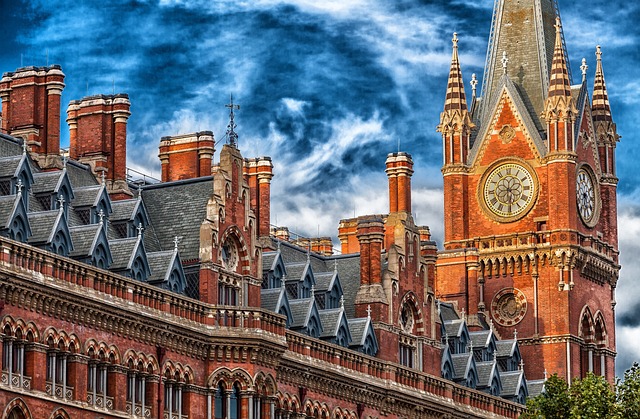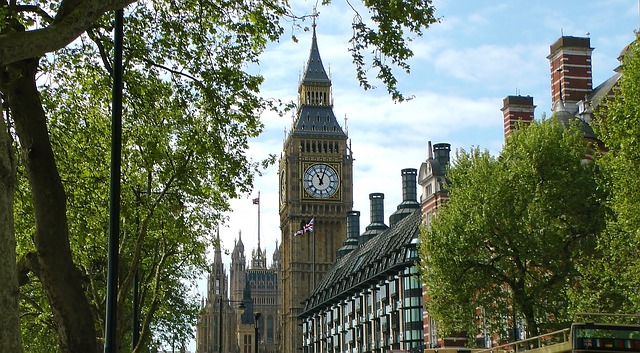British Architecture: Modern and Traditional Styles

British architecture is a fascinating blend of historical grandeur and contemporary innovation. From the medieval castles and Gothic cathedrals that dot the countryside to the sleek, modern skyscrapers that define the skyline of cities like London, the UK’s architectural landscape tells the story of its rich cultural heritage and its forward-looking vision. This article explores the evolution of British architecture, highlighting both traditional and modern styles, and showcasing some of the most iconic examples of each.
Traditional British Architectural Styles
Traditional British architecture is characterized by its diversity, reflecting the influences of various historical periods and cultural movements. Below are some of the most prominent traditional styles:
1. Medieval Architecture (11th–16th Century)
- Characteristics: Thick walls, small windows, pointed arches, and ribbed vaults.
- Examples:
- Tower of London: A historic castle with Norman architecture, built by William the Conqueror in the 11th century.
- Canterbury Cathedral: A masterpiece of Gothic architecture, known for its stunning stained glass windows and intricate stone carvings.
2. Tudor Architecture (1485–1603)
- Characteristics: Half-timbered houses, steeply pitched roofs, and decorative timber framing.
- Examples:
- Hampton Court Palace: A royal residence with Tudor-style architecture, featuring ornate chimneys and grand courtyards.
- Anne Hathaway’s Cottage: A picturesque example of a Tudor farmhouse, located in Stratford-upon-Avon.
3. Georgian Architecture (1714–1830)
- Characteristics: Symmetrical facades, sash windows, and classical influences.
- Examples:
- Royal Crescent, Bath: A sweeping crescent of Georgian townhouses, designed by John Wood the Younger.
- 10 Downing Street: The official residence of the British Prime Minister, showcasing classic Georgian design.
4. Victorian Architecture (1837–1901)
- Characteristics: Ornate detailing, steep gables, and the use of new materials like iron and glass.
- Examples:
- Houses of Parliament: A Gothic Revival masterpiece designed by Charles Barry and Augustus Pugin, featuring the iconic Big Ben clock tower.
- St Pancras Railway Station: A stunning example of Victorian Gothic architecture, with its red brick facade and intricate detailing.
5. Arts and Crafts Movement (Late 19th–Early 20th Century)
- Characteristics: Handcrafted elements, natural materials, and a focus on simplicity and functionality.
- Examples:
- Red House, Bexleyheath: Designed by William Morris and Philip Webb, this house is a quintessential example of Arts and Crafts architecture.
- Standen, West Sussex: A country house designed by Philip Webb, showcasing the movement’s emphasis on craftsmanship and nature.
Modern British Architectural Styles
Modern British architecture reflects the country’s embrace of innovation, sustainability, and contemporary design. Below are some of the key modern styles and their iconic examples:
1. Modernism (Early to Mid-20th Century)
- Characteristics: Clean lines, minimal ornamentation, and the use of materials like steel, glass, and concrete.
- Examples:
- Royal Festival Hall, London: A prime example of post-war modernism, designed by Leslie Martin and Peter Moro.
- Barbican Estate, London: A Brutalist housing complex known for its bold, geometric design.
2. High-Tech Architecture (Late 20th Century)
- Characteristics: Exposed structural elements, industrial materials, and a focus on functionality.
- Examples:
- Lloyd’s Building, London: Designed by Richard Rogers, this building features an inside-out design with its services and structure on the exterior.
- The Gherkin (30 St Mary Axe), London: A futuristic skyscraper designed by Norman Foster, known for its distinctive cylindrical shape.
3. Contemporary Architecture (21st Century)
- Characteristics: Innovative designs, sustainable materials, and a focus on creating spaces that enhance the quality of life.
- Examples:
- The Shard, London: Designed by Renzo Piano, this glass-clad skyscraper is the tallest building in the UK, offering panoramic views of the city.
- Eden Project, Cornwall: A series of biomes designed by Nicholas Grimshaw, showcasing sustainable architecture and environmental education.
4. Sustainable Architecture
- Characteristics: Energy-efficient designs, use of renewable materials, and integration with the natural environment.
- Examples:
- BedZED, London: A sustainable housing development designed by Bill Dunster, featuring solar panels, green roofs, and rainwater harvesting systems.
- The Crystal, London: A sustainable cities initiative by Siemens, showcasing cutting-edge green building technologies.
The Evolution of British Architecture
British architecture has evolved over centuries, influenced by historical events, technological advancements, and cultural shifts. The transition from traditional to modern styles reflects the country’s ability to preserve its heritage while embracing innovation.
- Historical Influences: The Roman occupation, Norman conquest, and Gothic revival are just a few of the historical events that have shaped British architecture.
- Industrial Revolution: The advent of new materials and construction techniques during the Industrial Revolution paved the way for modern architectural styles.
- Post-War Reconstruction: The need to rebuild after World War II led to the rise of modernist and Brutalist architecture in the UK.
- Sustainability Movement: In recent years, there has been a growing emphasis on sustainable architecture, driven by the need to address climate change and reduce environmental impact.
Iconic British Architects
Several architects have left an indelible mark on British architecture, blending tradition with modernity:
- Sir Christopher Wren: Known for designing St Paul’s Cathedral and many other churches in London after the Great Fire of 1666.
- John Nash: A leading architect of the Regency era, responsible for the design of Buckingham Palace and Regent Street.
- Norman Foster: A pioneer of high-tech architecture, with iconic projects like The Gherkin and Wembley Stadium.
- Zaha Hadid: The first woman to win the Pritzker Architecture Prize, known for her futuristic designs, including the London Aquatics Centre.



